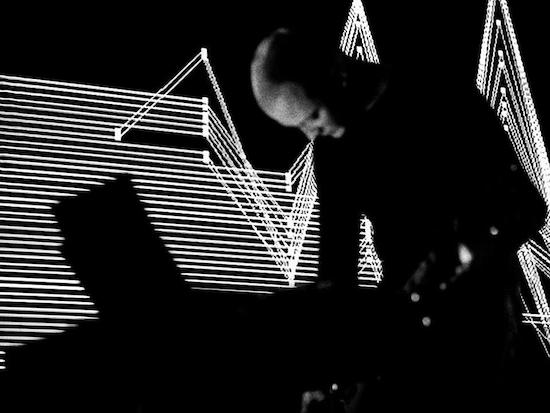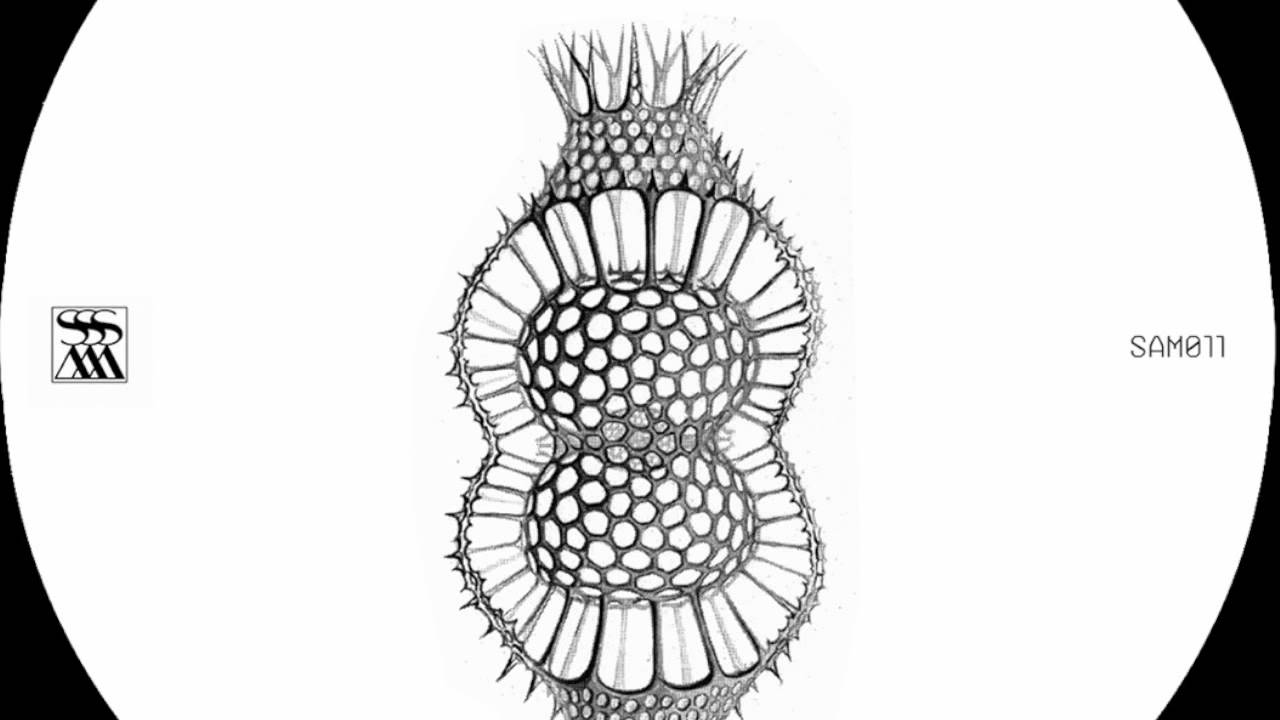A long-standing member of Raster-Noton, David Letellier, otherwise known as Kangding Ray, has come to push the boundaries of the imprint’s sound somewhat. Having released a host of EPs and all four of his albums via the label, in recent years Letellier has managed to combine the minimalism and icy precision commonly associated with Alva Noto’s imprint with something altogether more emotive and organic sounding. His appearances on Luca Mortellaro’s Stroboscopic Artefacts have played a crucial role in shaping the Berlin-based artist’s sound, EPs and shorter-form releases allowing him the freedom to explore more radical, dancefloor-oriented productions.
With a new contribution to Stroboscopic Artefacts’ upcoming EP, the latest to celebrate their fifth birthday, we decided to catch up with Letellier to discuss his relationship with the label and the challenging process of writing an album, such as this year’s Solens Arc.
The latest Five Years EP for Stroboscopic Artefacts has just come out – how did you first get in touch with Luca and the Stroboscopic team? What prompted you to first work with the label, having previously released the bulk of your work through Raster-Noton?
David Letellier: If I remember correctly, I met Luca a couple of years ago at Berghain, where he proposed that I do a ‘Monad’ EP. At first I wasn’t that keen on doing it as it was digital only, and I am a bit of a fetishist, I love the materiality of a record – thinking about the cover and so on – but Luca is very persuasive. He convinced me to do it and as I like the label a lot, I thought I’d give it a try. The Monad was a very big success actually, it was really beyond my expectation and I didn’t expect it to become so important in my career.
There’s quite a steady interval between each of the albums you’ve done for Raster-Noton, maybe three or four years, then the next one. Do you find it a very draining experience? Do you spend a lot of time thinking about the concepts and what you want to achieve before beginning the actual writing process for example?
DL: First of all, I’m a very slow producer. There are different types of producers out there, some of them will make a track in one day and be happy with it. I’m more like a carpenter – like I’m working on wood, carving and carving until I find the essence of it. I’ll tend to work on a track, then go back and do another version and go back again, then try going further. It’s a bit of a painful process but it’s the only way I can be happy with the result at the end.
It’s interesting hearing you talk about doing different versions. I was reading a previous interview where you were saying you might do twenty or thirty versions of the same track, but Carsten Nicolai [Alva Noto] always seems to prefer the earlier sketches! How does that feel when you’ve spent so long working on all these variations and he likes the first thing you did…
DL: [laughs] The thing is that I’ll only release what I’m happy with, and most of the time it’s not going to be version two! Version thirty-six might actually be very close to version two, because I go back and forth. I’m not necessarily adding stuff, as the process is often mainly subtractive. Carsten often says I should work faster and go more rough and so on, which I understand. I have lots of producer friends who are also like that, who go directly for the raw, first idea. Like my friend Miles Whittaker from Demdike Stare, who I think is producing something like two hundred tracks a year, and he’s not looking back! I admire that a lot, he’ll give the track away, set it free, and go on with another idea. Most of them are not released, but some of them make it onto a record.
For me, even if some people might think my first version was the best I still need to make the whole loop because I often have the feeling that it adds deepness to the work. I’m looking for the depth which will make the track live longer, I’m searching for something non-temporal.
One of the other things that struck me with your different albums is that it feels like you’re working in different ways for each one, or at least have very different ideas for each one. Solens Arc, for example, feels much more raw and has less of the clinical sound you might typically associate with Raster-Noton. It feels like it has more emotion in it.
DL: It’s true, it contains much more dirt and textures. It’s also less edited. In a way, I think some of my earlier productions were fitting in with a more clean, precise type of production, which was a trademark of Raster-Noton. I think nowadays it’s more diffuse. There’s stuff on Raster-Noton now like Emptyset – very analogue and raw production as well…
When you started getting into music, I assume when you were living in France – what were the first genres you were into?
DL: Definitely not electronic music! I don’t come from an electronic music background at all. In the nineties I barely acknowledged the boom of techno culture, I was into rock and that was it! I guess I was a grunge kid who moved more into post-rock, noise and industrial music. So it was ranging from My Bloody Valentine to Nine Inch Nails or something, that was the kind of thing I was into. I was playing guitar in bands and everything – electronic music was something very unknown to me.
So you moved over to Berlin for studies originally, right?
DL: Yes, I didn’t move there for the music – Berlin was not that hype at that time, and I didn’t know what was happening there anyway. What brought me here was architecture and the massive urban changes that the city was undergoing after the fall of the Wall.
And was it there that you started getting into techno more or were you already listening to it in France?
DL: At the end of the 90s, there were more and more crossovers between electronic music and rock or pop. Even if a lot of bands like Depeche Mode or New Order were doing this since the 80s, I think the mainstream explosion of trip-hop sort of changed the game globally, and announced a massive shift where electronic-based productions would become ubiquitous. Also, as for a lot of people from my generation, the way some post-rock bands started to explore different sounds and explode the traditional ‘song-structure’ opened a lot of doors. With their linear, instrumental compositions, slowly evolving rise of noises, they were freeing themselves from the typical chorus/verse pattern. Even when playing in my band, I was really into breaking the structures and clichés of rock music. At some point I wanted to integrate electronic drums, mostly because I was fed up with the drummer [laughs]. I bought a sampler, and that’s how I started using machines.
Then I moved to Berlin and it was another world; the culture was so different, electronic music was just everywhere!
And what are you working on at the moment?
DL: I’m preparing a sort of hybrid DJ set actually. I’m starting to get more occasions to do that kind of set, and I’ve realised that sometimes the pure hardware live show which I’m doing right now isn’t the most appropriate in certain contexts. Layering, mixing my own elements with music from other producers that I love, plus a bit of hardware, gives me a lot more flexibility in a club context.
It also allows me to be much more diverse because I have a lot of influences that you might not directly hear in my productions, but which are there, like hip-hop, R&B, weird experimental or ambient music; it’s very exciting to experiment with these materials, and not only my own productions.
Also, on the technical side, as I have a fully hardware live setup, I bring a lot of gear. It’s quite a heavy technical rider, and in certain settings you just need something more functional and light, more fitting to a club context. Since I’m not a ‘real’ DJ in the sense that I don’t come from the vinyl culture or anything related, I’m approaching it from a producer’s point of view. It’s a sort of hybrid thing, integrating a drum machine and a small synth…
At the end, nobody should care about the gear you’re using anyway, it’s all about the result. It’s about if the moment you’re creating, whether the combination of music, time and space, is right or not.
V Five Years Of Artefacts: Chapter Three is out now on Stroboscopic Artefacts, as is Solens Arc, via Raster-Noton. Stay tuned to Kangding Ray’s website for his live dates




